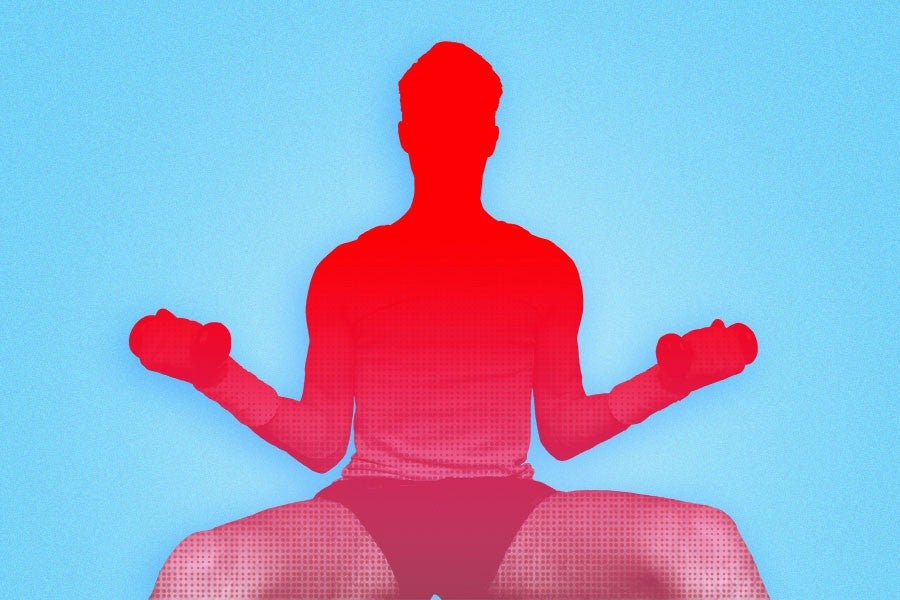I’ve got crippling commitment issues when it comes to exercising. It’s shameful the amount of times I’ve put on workout clothes, wandered around my apartment, conjured up some dumb tweet about this very scenario and then opted to nap instead. The mere thought of going to the gym for an extended period is enough to make me quit trying to get in shape altogether.
Wonder if the NSA has a highlight reel of all the times ive put on workout clothes, wandered the apt, sat on twitter, ate, then fell asleep
— Quinn (@quinmyers) June 18, 2013
I need a new life hack to make exercise suck less. Could the micro-workout — a quick and high-intensity bout of exercise, like a flirty gym tryst as opposed to a long-term relationship — be a solution?
One study at McMaster University tried to figure it out. Researchers had 27 “sedentary men” do shorter, more strenuous workouts for 12 weeks. They found that the micro routine helped them get into shape as much as “traditional endurance training, despite a five-fold lower exercise volume and time commitment.” Sprinting for 20 seconds three times, with a few pushups or pull-ups in between, produced the same results as jogging at a moderate pace for 45 minutes.
A convert to the micro-workout routine is Josh Peter, a former marathon runner who made the change after becoming a dad. “My workouts used to be extensive, long and drawn out: hours at the gym or pounding pavement,” he says. “This year I’m a new dad, and suddenly two-hour training runs aren’t practical. Who knew!”
Since January, Peter has done 100 burpees a day. They take him about 10 to 15 minutes but has “worked wonders” for him. “No matter how many burpees I do, these full-body buggers never get easy. I’m always doubled over and out of breath.” Admittedly, he’s no longer a distance runner, but says he’s a better overall athlete.
Peter adds that while he misses the long, zen-inducing runs in the park, he can’t argue with how much time he’s saving. “Ideally, I’m jogging to the park and dedicating some time to a workout where I can completely focus. But since life isn’t ideal, I’m working my workout into everyday life. I’m doing sets of burpees on the kitchen floor in-between scrambling eggs and looking for my kid’s socks. And that’s life. The key is just to do it! A body in motion stays in motion.”
It’s an irresistible theory, that shorter workouts may be key to building good exercise habits. By the end of the quick session, you might feel ready for more — which will bring you back to the gym faster than if you tire yourself out and leave yourself sore.
But does it actually work?
To find out, I reached out to Dr. Naresh Rao, head physician for the U.S. men’s water polo team.
According to Rao, when it comes to lack of time — often the №1 reason people don’t work out, he says — a micro-workout is a solid replacement. “If we can try to achieve the same benefit in less time, it’s definitely worth doing.” He adds a few caveats, however: “Anything that goes from start to stop in a short period of time has a higher rate of injury. First is the cardiovascular strength: You do need to make sure you don’t have heart disease, or be cleared by your doctor to have that kind of load put on your cardiovascular system.
“Secondly, if you’re going from nothing to doing sprints or something similar on a bike,” he adds, that’s when he sees a lot of injuries: when people who are otherwise sedentary go “from 0 to 60.” The body isn’t used to that kind of high-intensity training.
Still, Rao says, “assuming one is cardiovascularly okay to do it, then I don’t see a reason not to, especially when the alternative is doing nothing. A lot of people do it, and they’re fine.”
So whether you opt for micro-workouts or longer workouts, both beat laying on the couch and taking a nap (again, guilty as charged). “There’s nothing wrong with doing 45 to 50 minutes of continuous exercise either,” says Rao, “but if you don’t have time, then try the higher intensity.” Plus, after 12 weeks, you might find you no longer need to trick yourself into exercise at all.

